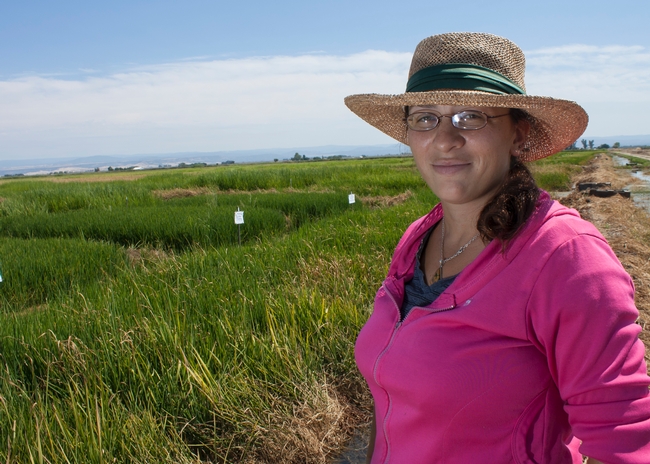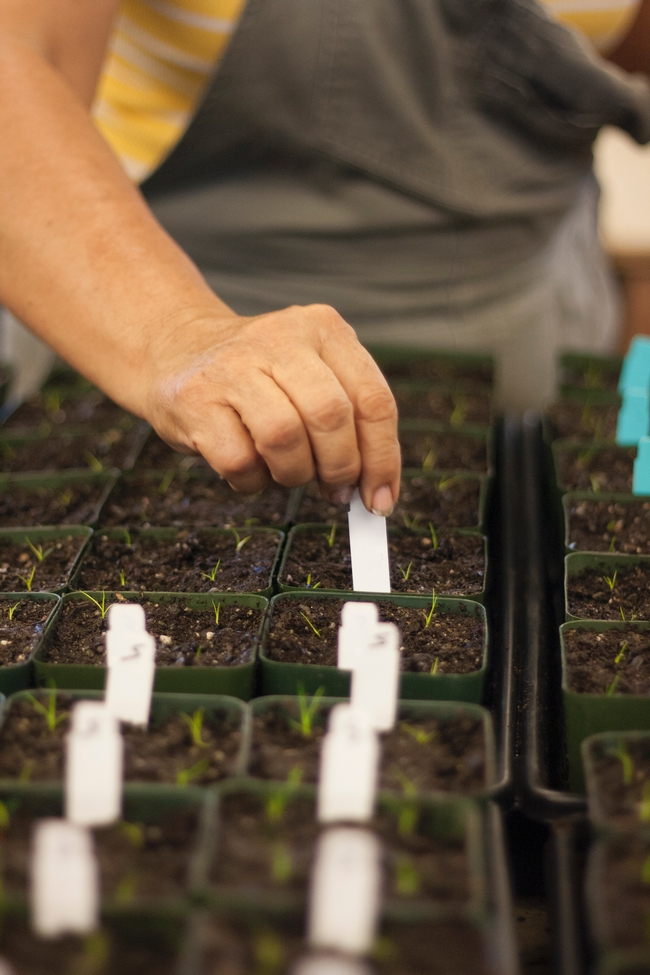Over the last three millennia, the practice of growing rice has evolved and spread throughout much of the globe. From China, through India, to Greece and parts of the Mediterranean and from Europe to the Americas, rice has demonstrated its versatility in desert regions and wetland deltas alike. Abundant in carbohydrates, it is today one of the world’s most widely eaten foods.
While University of California researchers develop rice varieties more tolerant to the modern challenges of climate change — flooding, heat stress, drought — California rice farmers each year discover more new threats in the form of non-native and herbicide-resistant weeds. So well adapted are these weeds that if left unmanaged, they cause rice yields in some places to plummet to nearly nothing.
The introduction of rice to California in 1912 was fraught with weed challenges from the start. The traditional dry-seeding method allowed barnyard grass to quickly overrun fields. While a new water-seeding technique suppressed the weed, it led to a whole other set of problems. In continuously flooded fields — still the most widely used practice in California today — an imported weed, late watergrass, flourished. Aquatic weeds took advantage of the new environment while others gradually became more flood tolerant. For many years, advanced herbicides allowed farmers to gain ground over these weeds.
Then, beginning in the early 1990s, several weed species, including late watergrass, were found to be evolving resistance against the most powerful herbicides. A metabolic resistance to one herbicide, researchers discovered, could lead to resistance for another.
Weeds also found new ways to outcompete rice. One invasive weed, Ludwigia, grows fast and tall — as high as 10 feet. Shadowing the rice plants, it spawns tiny seeds that travel well in water. Other weeds, meanwhile, are small and run along the ground to avoid combines and some emerge earlier in the season than rice, dominating resources.
In the Department of Plant Sciences at UC Davis, professor Albert Fischer’s laboratory is battling rice weeds on a variety of fronts: by researching the evolution and mechanisms of herbicide resistance, finding traits that make rice varieties more competitive, developing resistance techniques through field testing at the industry-supported Rice Experiment Station in Biggs, Calif., and by encouraging farmers to diversify management methods.

One system Fischer encourages is the stale seedbed technique, which allows weeds to emerge first from a reserve of seeds in the soil. Once that flush is up, farmers use a general herbicide to kill the weeds. At least one local farmer with a bad weed problem has controlled late watergrass this way. By replacing herbicides with shallow tilling, organic farmers can use this method.
With each management system is a different combination of growing techniques and herbicides, depending on weather, soil moisture and soil temperature, among other factors. Fischer’s team at the experiment station spends much of its time testing these herbicides on new weeds.
UC Cooperative Extension farm advisors encourage growers to also sanitize equipment, rotate crops, scout for surviving weeds and apply herbicide only when necessary, easing selection pressure on weeds while reducing environmental impact. Along that line, Fischer’s team is discovering how switching growing techniques and irrigation systems may be helping farmers meet higher environmental standards, addressing a trend of steeper water prices in California. Other researchers see this as an opportunity to reduce greenhouse gases released from decaying rice stalks post-harvest.
For each strategy, researchers weigh costs over benefits to select the right weapons for arming farmers entangled in this ongoing war with weeds.